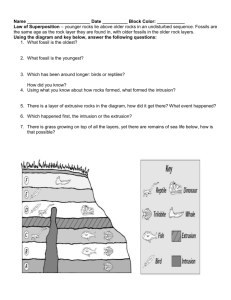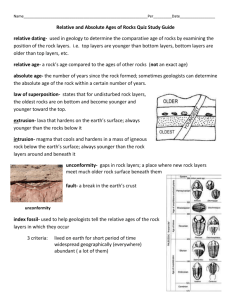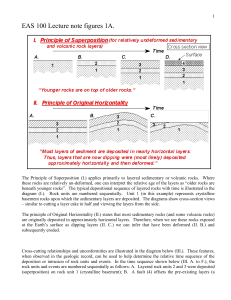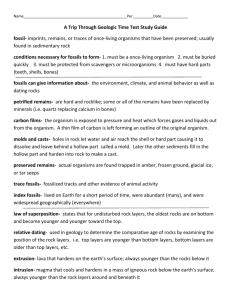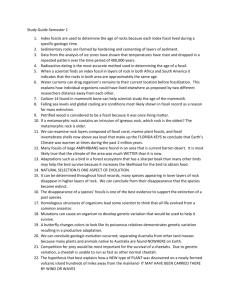Relative Age SG - Answers
advertisement
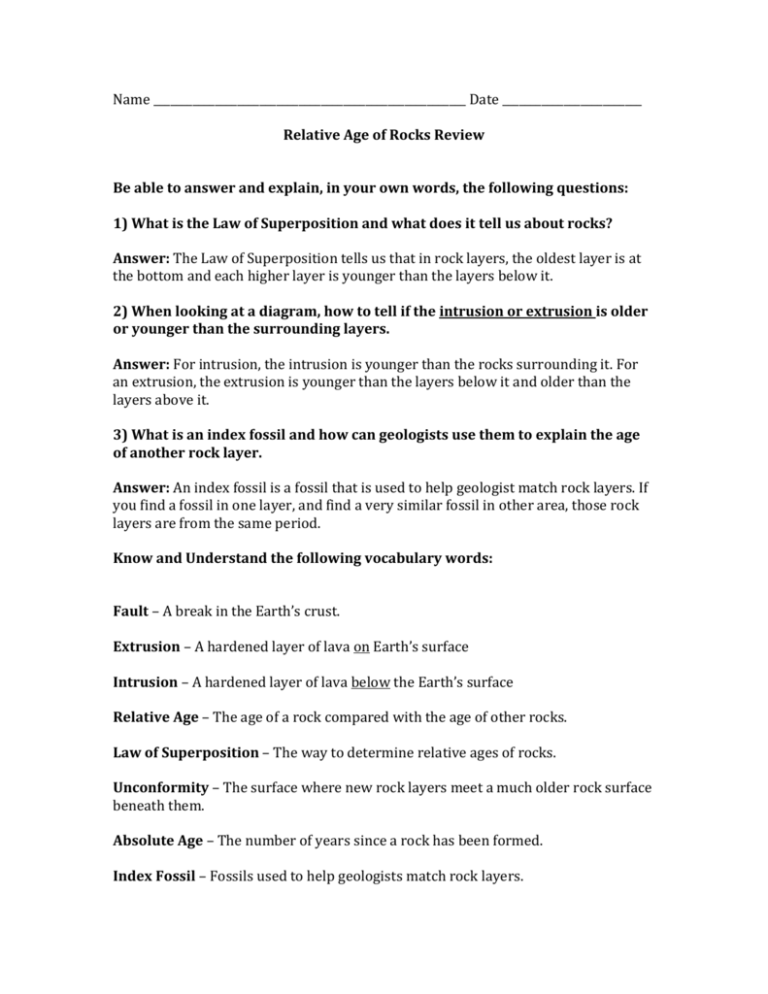
Name ________________________________________________________ Date _________________________ Relative Age of Rocks Review Be able to answer and explain, in your own words, the following questions: 1) What is the Law of Superposition and what does it tell us about rocks? Answer: The Law of Superposition tells us that in rock layers, the oldest layer is at the bottom and each higher layer is younger than the layers below it. 2) When looking at a diagram, how to tell if the intrusion or extrusion is older or younger than the surrounding layers. Answer: For intrusion, the intrusion is younger than the rocks surrounding it. For an extrusion, the extrusion is younger than the layers below it and older than the layers above it. 3) What is an index fossil and how can geologists use them to explain the age of another rock layer. Answer: An index fossil is a fossil that is used to help geologist match rock layers. If you find a fossil in one layer, and find a very similar fossil in other area, those rock layers are from the same period. Know and Understand the following vocabulary words: Fault – A break in the Earth’s crust. Extrusion – A hardened layer of lava on Earth’s surface Intrusion – A hardened layer of lava below the Earth’s surface Relative Age – The age of a rock compared with the age of other rocks. Law of Superposition – The way to determine relative ages of rocks. Unconformity – The surface where new rock layers meet a much older rock surface beneath them. Absolute Age – The number of years since a rock has been formed. Index Fossil – Fossils used to help geologists match rock layers.

